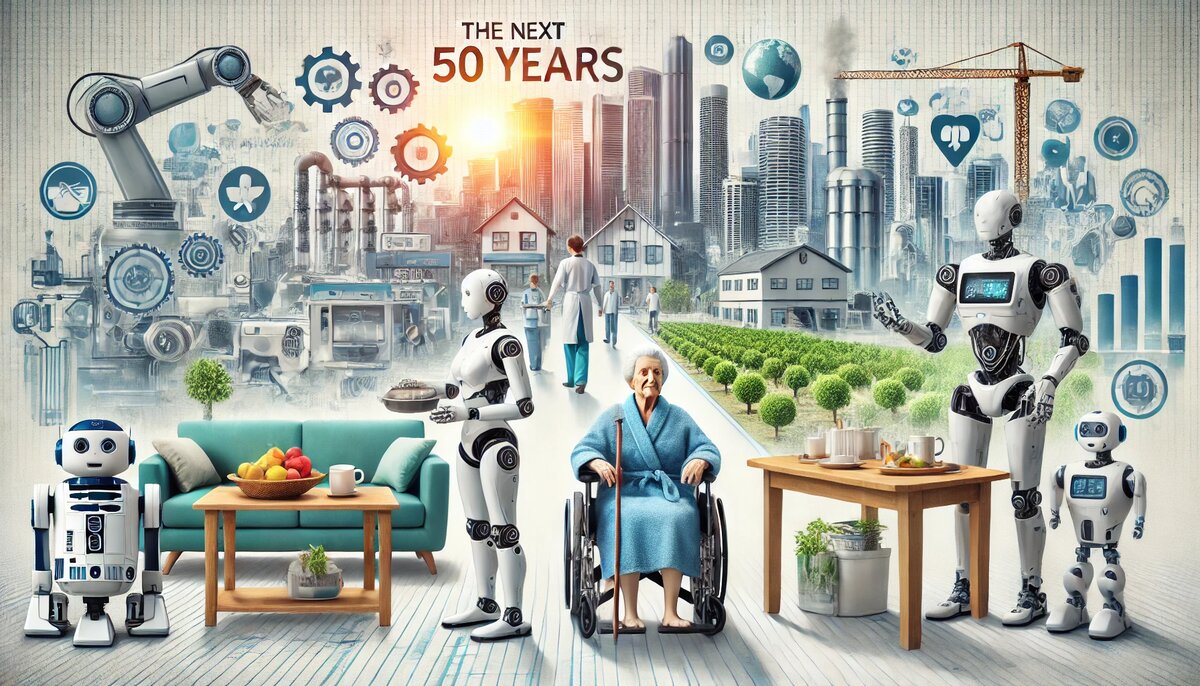Introduction
In a world obsessed with mastery and success, the 10,000-hour rule has long been heralded as the golden standard for achieving expertise in any field. Popularized by Malcolm Gladwell in his book “Outliers,” this rule suggests that with 10,000 hours of dedicated practice, anyone can master a skill. However, in the fast-paced and ever-evolving landscape of technology, a new paradigm is emerging as a more effective blueprint for innovation and success: the 10,000-experiment rule.
Introduced by Michael Simmons in his thought-provoking article on Medium, “Forget The 10,000-Hour Rule; Edison, Bezos, & Zuckerberg Follow The 10,000-Experiment Rule,” this new rule shifts the focus from the quantity of time spent practicing to the number of experiments conducted. This approach champions experimentation, quick learning, and the ability to adapt and pivot as the cornerstones of technological innovation and personal growth. Through this lens, the stories of Thomas Edison’s relentless experimentation, Jeff Bezos’s innovative leadership at Amazon, and Mark Zuckerberg’s rapid iteration at Facebook take on new significance. They exemplify how embracing a culture of experimentation can lead to unprecedented achievements.
As we dive deeper into the essence of the 10,000-experiment rule, we will explore its foundations, its scientific backing, and its application across various domains of technology, with a special focus on robotics. By understanding and applying this rule, individuals and organizations alike can unlock new pathways to innovation and success in the technological realm.
The Evolution from Hours to Experiments
The traditional 10,000-hour rule, while a useful guideline for developing skill through practice, presents a linear approach to mastery that overlooks the complex, non-linear nature of innovation. In contrast, the 10,000-experiment rule represents a paradigm shift, focusing on the iterative process of trial, error, and learning. This approach is particularly resonant in the field of technology, where rapid advancements and unpredictable challenges require a more flexible and adaptive mindset.
In his 2018 CNBC interview, Bezos articulated the essence of this experimental approach:
To be innovative you have to experiment. If you want to have more inventions, you need to do more experiments per week per month per year per decade. It’s that simple. You cannot invent without experimenting. And here’s the other thing about experiments…lots of them fail. If you know it’s going to work in advance it is not an experiment.
Jeff Bezos
Also, keep in mind that when you experiment, you have to be prepared for many failures. Bezos mentions this in his 2016 Annual Letter to Shareholders:
To invent you have to experiment, and if you know in advance that it’s going to work, it’s not an experiment. Most large organizations embrace the idea of invention, but are not willing to suffer the string of failed experiments necessary to get there. Outsized returns often come from betting against conventional wisdom, and conventional wisdom is usually right. Given a ten percent chance of a 100 times payoff, you should take that bet every time. But you’re still going to be wrong nine times out of ten.
Jeff Bezos
Bezos’s emphasis on experimentation as a core strategy highlights the critical role that embracing failure and learning plays in driving innovation. Under his leadership, Amazon has become a prime example of how a culture of experimentation can lead to groundbreaking innovations, from AWS to Alexa.
Thomas Edison, often hailed as one of the greatest inventors in history, exemplifies the 10,000-experiment rule long before it was formally articulated. Edison’s approach to invention was fundamentally experimental, famously remarking, “I have not failed. I’ve just found 10,000 ways that won’t work.” His work on the electric light bulb, phonograph, and motion picture camera, among countless other inventions, showcases the power of persistence and the willingness to embrace failure as a stepping stone to success.
The shift from hours to experiments encourages a mindset of curiosity, resilience, and openness to failure. It suggests that success in technology and innovation is not merely a function of time spent, but rather the quality and quantity of experiments conducted. This approach fosters a culture of continuous learning and adaptation, essential qualities in the fast-evolving tech landscape.
By embracing the 10,000-experiment rule, individuals and organizations can unlock a more dynamic and effective pathway to innovation. This rule champions the idea that through a systematic approach to experimentation, one can navigate the complexities of technology and emerge with novel solutions and breakthroughs.
Scientific Backing: The Meta-Analysis of Deliberate Practice
The limitations of the 10,000-hour rule are further illuminated by a comprehensive meta-analysis on deliberate practice and performance across various domains, including music, games, sports, education, and professions. This study, which examined the effects of deliberate practice on performance, found that while practice is undoubtedly important, its overall contribution to performance varies significantly across disciplines.
In domains where performance is highly predictable and structured, such as classical music and chess, deliberate practice accounted for a substantial portion of variance in performance. However, in less structured and more dynamic fields, such as technology and entrepreneurship, the impact of deliberate practice was notably smaller:
“We found that deliberate practice explained 26% of the variance in performance for games, 21% for music, 18% for sports, 4% for education, and less than 1% for professions.”
This finding suggests that while honing specific skills is important, the ability to innovate, adapt, and experiment plays a crucial role in achieving success in these fields.
The implications of this research underscore the value of the 10,000-experiment rule. In the realm of technology, where the landscape is characterized by rapid change and uncertainty, the capacity to learn from experiments—not just from repeated practice—is paramount. This approach aligns with the idea that success in technology hinges on the ability to navigate ambiguity, test hypotheses, and pivot based on feedback and outcomes.
Case Studies of Success Through Experimentation
The power of the 10,000-experiment rule is vividly illustrated in the stories of tech luminaries and companies that have placed experimentation at the heart of their success. These case studies not only demonstrate the rule’s effectiveness but also inspire a culture of innovation and resilience.
Thomas Edison: The Quintessential Experimenter
Thomas Edison’s work is perhaps the most iconic example of success through experimentation. Edison’s philosophy of “genius is one percent inspiration, ninety-nine percent perspiration” reflects his commitment to the iterative process of innovation. His development of the electric light bulb involved over a thousand experiments, a journey marked by setbacks, learning, and eventual triumph. Edison’s persistence and willingness to learn from each experiment laid the groundwork for modern electric lighting and numerous other technologies, embodying the essence of the 10,000-experiment rule.
Amazon: Cultivating an Experimentation Culture
Under Jeff Bezos’s leadership, Amazon has become synonymous with innovation, largely due to its embrace of experimentation. Amazon’s foray into cloud computing with AWS, its development of the Kindle, and its exploration of AI through Alexa are outcomes of its experimental culture. Bezos’s approach—viewing every failure as an opportunity to learn and every experiment as a step toward discovery—has propelled Amazon into new markets and technologies, illustrating the transformative power of the 10,000-experiment rule in corporate innovation.
Facebook: Rapid Iteration and Growth
Mark Zuckerberg’s Facebook has similarly leveraged the power of experimentation to evolve from a college networking site into a global social media platform. Facebook’s rapid iteration on features, constant A/B testing, and openness to pivoting based on user feedback have been instrumental in its growth and adaptability. This commitment to experimentation has enabled Facebook to stay relevant amidst changing social media landscapes and user preferences.
Applying the 10,000 Experiment Rule in Robotics
Robotics is a field that epitomizes the intersection of complex hardware, sophisticated software, and intricate real-world interactions. The 10,000-experiment rule finds a fertile ground in robotics, where practical, hands-on experimentation and iterative learning are key to innovation and breakthroughs.
Using ROS 2 (Robot Operating System 2) significantly enhances the capacity for such experimentation, providing a unified and flexible framework for robotics development.
Iterative Design and Testing with ROS 2
The iterative design process in robotics is crucial for developing effective and efficient systems. ROS 2 facilitates this process by offering advanced tools for building and testing robotic applications. Its modular architecture allows roboticists to experiment with different configurations and functionalities easily, streamlining the process of learning from each iteration. By leveraging ROS 2’s capabilities, developers can quickly prototype ideas, test hypotheses, and refine their designs based on real-world feedback.
Simulation-Based Testing Enhanced by ROS 2
ROS 2 integrates seamlessly with powerful simulation tools, such as Gazebo and NVIDIA Isaac Sim, enabling developers to conduct thousands of simulated experiments efficiently. These simulations are invaluable for exploring the behavior of robotic systems under a wide range of conditions without the time and cost associated with physical prototypes. By utilizing ROS 2 in simulation-based testing, researchers can accelerate the experimentation process, rapidly iterating on design and software algorithms to identify promising approaches before real-world implementation.
Real-World Experimentation and ROS 2
When transitioning from simulation to real-world testing, ROS 2’s robustness and flexibility become even more beneficial. Its support for diverse hardware and real-time communication allows for extensive real-world experimentation, critical for refining robot designs and ensuring they can handle the complexities of their intended environments. ROS 2’s ecosystem encourages a collaborative approach to experimentation, where developers can share insights, tools, and best practices, further accelerating innovation in robotics.
Leveraging ROS 2 for the 10,000 Experiment Rule
ROS 2 is designed to support the rapid iteration and flexibility required by the 10,000-experiment rule. Its features enable roboticists to:
- Prototype Quickly: Developers can use ROS 2 to build and test new ideas swiftly, reducing the time from concept to experimentation.
- Analyze and Iterate: With ROS 2, it’s easier to collect and analyze data from experiments, facilitating a deeper understanding of each trial and informing subsequent iterations.
- Collaborate and Share: The ROS 2 community encourages sharing of software, tools, and best practices, making it easier for roboticists to learn from each other’s experiments.
Practical Tips for Implementing the 10,000 Experiment Rule
Adopting the 10,000-experiment rule requires a strategic approach to experimentation. Here are some practical tips for individuals and organizations looking to embrace this mindset:
- Document Everything: Keep detailed records of each experiment, including the hypothesis, methodology, results, and learnings. This documentation is invaluable for tracking progress and informing future experiments.
- Embrace Failure: View each failed experiment as a learning opportunity. Analyzing why an experiment didn’t work is often more informative than a successful outcome.
- Foster a Culture of Curiosity: Encourage team members to ask questions, propose experiments, and explore new ideas. A supportive environment that values curiosity and risk-taking is essential for innovation.
- Leverage Technology: Utilize software and tools designed for managing experiments. These can help organize data, track progress, and analyze results, making the experimentation process more efficient and effective.
Conclusion
The 10,000-experiment rule offers a compelling framework for achieving success in technology and beyond. By shifting the focus from sheer hours of practice to the quality and quantity of experiments, individuals and organizations can foster a culture of innovation, resilience, and continuous learning. The stories of Edison, Bezos, Zuckerberg, and countless others in the field of technology underscore the transformative power of this approach. As we look to the future, embracing the mindset of experimentation will be key to navigating the complexities of technology and unlocking new realms of possibility. Let the journey of 10,000 experiments begin.



